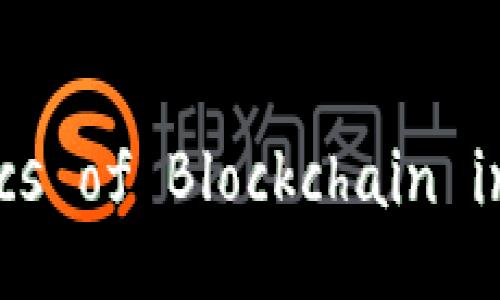区块链技术作为一种颠覆性的创新,已经在多个领域得到了应用,其中电商领域的变革尤为显著。区块链国际商城借...
Blockchain technology has revolutionized the way we think about data integrity, security, and decentralization. It has become the backbone of various applications beyond cryptocurrencies, including supply chain management, healthcare, finance, and more. In the context of application chains, blockchain serves as a foundational technology that enhances transparency, security, and efficiency.
This article will delve into the key characteristics of blockchain as applied within application chains, addressing its unique attributes that differentiate it from traditional databases and other technologies. We will also explore four relevant questions to provide a more comprehensive understanding of this topic.
## Key Characteristics of Blockchain in Application ChainsBlockchain technology has several defining characteristics that are particularly advantageous for application chains. Below are the primary traits that set it apart:
### 1. DecentralizationOne of the most significant characteristics of blockchain is decentralization. Unlike traditional databases that typically rely on a central authority or server, blockchain distributes its data across a network of nodes. This means that no single entity has control over the entire blockchain, which enhances trust and security.
In application chains, this decentralization leads to numerous benefits, such as:
Another critical characteristic of blockchain technology is immutability. Once information is recorded on the blockchain, it cannot be altered or deleted without consensus from the network. This feature is especially crucial in application chains where data integrity is paramount.
Immutability leads to:
Smart contracts are self-executing contracts with the terms of the agreement directly written into code. They automatically enforce and execute terms when predetermined conditions are met. This characteristic is especially advantageous in application chains where automation can save time and reduce human error.
Smart contracts offer several benefits:
Consensus mechanisms are essential to blockchain technology, ensuring all nodes in the network agree on the validity of transactions. Different application chains may use various consensus methods, such as Proof of Work (PoW), Proof of Stake (PoS), or Byzantine Fault Tolerance (BFT).
This characteristic contributes to:
Scalability is a critical aspect of blockchain technology. While traditional blockchains may face limitations when handling a high volume of transactions, newer blockchain solutions crafted for application chains can address these challenges.
This characteristic is vital for:
Blockchain technology is being used in numerous applications across various industries. Here, we will examine some prominent use cases within application chains.
#### 1. Supply Chain ManagementIn supply chain management, blockchain enhances transparency and traceability. By recording every transaction on a secure ledger, companies can track the entire journey of products from production to delivery.
This visibility reduces the risk of fraud and ensures that products meet quality standards. Stakeholders can verify the authenticity of goods, which is crucial in industries like pharmaceuticals and luxury goods.
#### 2. Financial ServicesThe financial industry leverages blockchain for secure transactions, reducing costs associated with cross-border payments and remittance services. By using blockchain, banks can settle transactions in real time, eliminating the need for intermediaries and minimizing the risk of fraud.
#### 3. HealthcareIn healthcare, blockchain can securely store patient records, ensuring privacy and data integrity. Designed permissioned access allows healthcare providers to access a patient’s complete medical history while maintaining confidentiality.
#### 4. Voting SystemsSome application chains are exploring blockchain for secure, tamper-proof voting systems. By enabling transparent and auditable voting using blockchain technology, the integrity of elections can be upheld.
### Question 2: What challenges do application chains face when implementing blockchain?
While the benefits of blockchain in application chains are numerous, there are also significant challenges to consider. Understanding these obstacles is critically important for successful implementation.
#### 1. Scalability ConcernsOne of the most significant challenges is scalability. Many existing blockchain networks struggle to handle high transaction volumes. This limitation can hinder adoption, especially in applications that require fast processing times.
#### 2. InteroperabilityBlockchain networks often operate in silos, and interoperability between different blockchains can be a major hurdle. Achieving seamless communication among various blockchain systems is crucial for maximizing the benefits of blockchain technology.
#### 3. Regulatory IssuesThe regulatory landscape surrounding blockchain technology is still evolving. Companies implementing blockchain must navigate complex regulations, which can vary significantly between jurisdictions. This uncertainty can create barriers to adoption.
#### 4. Technology MaturityWhile blockchain technology is steadily evolving, many applications are still in their infancy. Organizations may be hesitant to commit resources to technologies that are not yet fully developed or understood.
### Question 3: How does the governance of blockchain networks work?Governance is a crucial aspect of blockchain networks, affecting how decisions are made and consensus is achieved. Understanding the governance models is important for stakeholders involved in application chains.
#### 1. Decentralized GovernanceMany blockchain networks operate on a decentralized governance model, where all stakeholders have a voice in decision-making. This includes voting rights, proposals for network improvements, and changes to protocol rules.
#### 2. On-chain vs. Off-chain GovernanceOn-chain governance refers to decision-making that occurs directly on the blockchain, allowing participants to vote on proposals. Off-chain governance, on the other hand, involves discussions and decisions made outside of the blockchain. Both models have their pros and cons.
#### 3. Community EngagementEffective governance requires active participation from the community. Building a strong community around a blockchain project fosters engagement, innovation, and drives the project forward.
#### 4. Conflict ResolutionBlockchain networks may face disagreements among stakeholders. A well-defined governance structure should include clear mechanisms for conflict resolution to maintain harmony within the community.
### Question 4: What future trends can we expect in blockchain application chains?
The future of blockchain in application chains is ripe with potential, driven by continuous innovation and advancements in technology. Here are some trends to watch for:
#### 1. Enhanced InteroperabilityAs the demand for blockchain solutions grows, the need for interoperability among different blockchains will become increasingly pressing. Future developments may focus on creating standards and protocols that enable seamless interaction among various blockchains.
#### 2. Adoption of Decentralized Finance (DeFi)The rise of DeFi applications is transforming the financial services landscape. Application chains that integrate DeFi solutions are likely to gain traction, offering users more options and control over their financial assets.
#### 3. Integration of Artificial Intelligence (AI)Combining AI with blockchain can enhance data analytics capabilities, leading to smarter, more efficient application chains. AI can improve decision-making processes and optimize operations across various domains.
#### 4. Expansion into Various IndustriesBeyond finance and supply chain, blockchain technology is expected to impact sectors like energy, real estate, and education. New applications will continue to emerge, showcasing blockchain's versatility and adaptability to different industries.
## ConclusionBlockchain technology brings significant advantages to application chains, including decentralization, immutability, smart contracts, consensus mechanisms, and scalability. By understanding its key characteristics, potential use cases, challenges, governance models, and future trends, stakeholders can effectively leverage blockchain to enhance their applications and drive innovation.